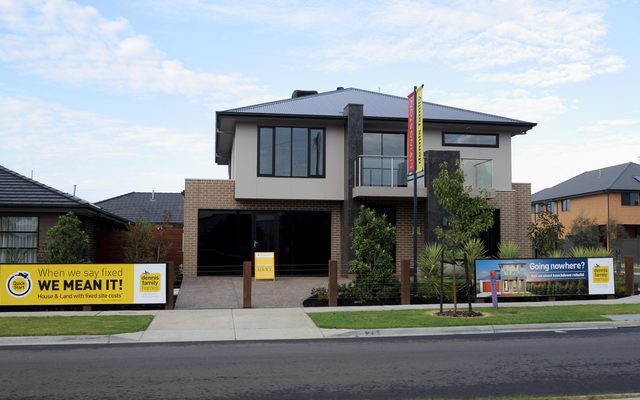This article is from the Australian Property Journal archive
ANZ has reaffirmed its forecast of an 18% peak-to-trough fall in Australian house prices ahead of another likely interest rate hike next week, while it is expecting prices to lift 5% in 2024 as rates begin to fall.
A report from ANZ economists Felicity Emmett and Adelaide Timbrell, Australia’s Housing: More weakness ahead, said the biggest factor driving down prices is reduced borrowing, capacity not a rise in forced sales.
“Arrears rates are coming from a very low base, households have built-up large liquidity buffers and the rise in the share of loans in negative equity is expected to be modest,” the economists said.
“In 2024, we expect a modest recovery as declining mortgage rates and rising incomes support higher prices.”
The Reserve Bank of Australia (RBA) governor Philip Lowe sensationally apologised this week to the thousands of Australians who took out mortgages on the RBA’s guidance that interest rates would stay at their record low until 2024.
The RBA has made seven consecutive hikes to the official interest rate, which sat at 0.1% earlier this year and is now at 2.85% as the bank tries to combat runaway inflation, which the RBA is expecting to hit 8% this quarter. Another hike is broadly expected at Tuesday’s board meeting, while ANZ is expecting rates to peak at 3.85% by May. RBA research suggests that 15% of households with variable mortgages on their homes will fall into negative cashflow at a cash rate of 3.6%.
Sydney prices have so far fallen the furthest of any capital city, partly reflecting timing and the extend of the pandemic run-up in prices. Sydney prices rose 29% between December 2019 and the peak, while Melbourne prices rose 14%, the economists said.
Brisbane prices have only been falling for four months, following a pandemic rise of 43%, but in October they fell at the fastest rate of all the capital cities.
“The smaller capital cities have generally held up better. We haven’t changed our forecast peak-to-trough declines, but we have pushed out some weakness into 2023,” Emmett and Timbrell said.
“The pace of declines, particularly in the Sydney and Melbourne markets, has eased in the last couple of months.
“While the recent declines have been marginally less than we expected, it is not inconsistent with our view of an orderly decline, and it does not suggest a nascent recovery in our view.
“The fundamentals of rising mortgage rates and repayments and lower borrowing capacity point firmly to ongoing housing price declines.”
Housing finance has fallen 24% from the peak but remains 28% above the pre-pandemic level, and ANZ believed it has “significantly further to fall”.
The recovery in population growth won’t be enough to offset the impact of rates hikes but will support housing demand over the next couple of years and cushion the fall in prices, they said.
Record high annual rent growth of 10% is unlikely to be reversed as international borders open, immigrants return in large numbers, and employment and income growth remain strong. Supply remains constrained and vacancies nationally are at just 1%.
Construction to fall
Meanwhile, ANZ expects housing approvals to eventually be hit by interest rates, and while persistent work-from-home trend and return of immigration will provide some support, it is tipping construction to fall 3.5% in 2023 and by 7.5% in 2024.
“The spike in building approvals and commencements due to the Homebuilder program is yet to be followed by a substantial increase in building completions. This is largely a result of a combination of labour and product capacity constraints, and a long period of extremely wet weather on the east coast. The large backlog of work built up as a result points to an extended construction cycle.”
Inflation of construction material costs has increased insolvencies and caused a higher-than-usual share of builders to be operating with negative cash flows, the economists said.
“Of the largest 200 building firms, 80 had a negative cash flow through the most recent quarter of data and more than a quarter had a negative cash flow over the year. Instability in the construction sector could slow the execution of residential construction, even as input prices settle.”




